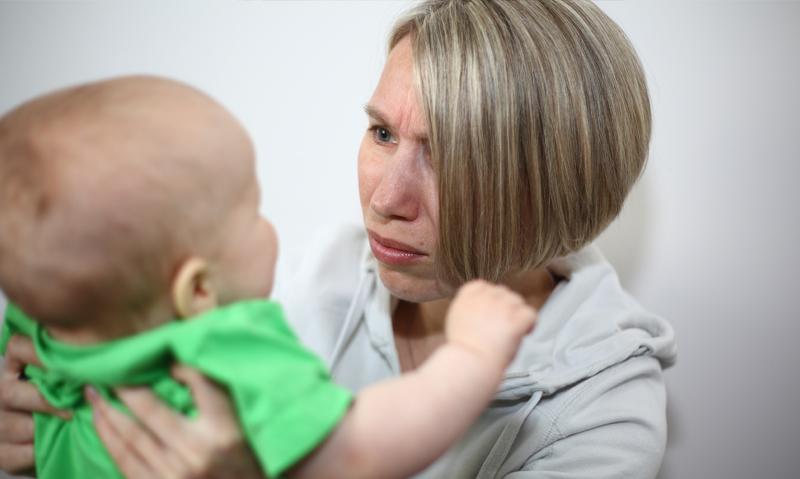DOCTORS should be alert to the possibility of abuse when treating head injuries in young children, say experts, but they caution that abusive head trauma is a difficult diagnosis that requires multidisciplinary input.
Associate Professor Franz Babl, head of emergency research at the Murdoch Childrens Research Institute and paediatric emergency physician at Melbourne’s Royal Children's Hospital, said abusive head trauma (AHT) could have a devastating and lifelong effect on young children, and it presented a “diagnostic dilemma” in both the intensive care unit (ICU) and the non-ICU setting.
Professor Babl comments come after research was published in Pediatrics that quantified the disability-adjusted life years (DALYs) associated with abusive head trauma in children aged 4 years and under. (1)
The US-based study evaluated 4824 AHT cases in 2009, including 334 children who died within 30 days. After surveying a convenience sample of 170 caregivers and paediatricians, they found that, on average, DALY loss per 30-day survivor included 7.6 years of lost life expectancy and 5.7 years lived with a disability.
“AHT is debilitating. One in 14 cases is fatal before hospital discharge. More than one-half of severely injured survivors will die before age 21 years”, the researchers wrote.
“Our estimates suggest that disability burden for the 44% of survivors who are severely injured is a 55.5% (0.555) reduction in their health-related quality of life.”
They wrote that the annual DALY burden several years after mild AHT exceeded the DALY burden of a severe burn.
Professor Babl told MJA InSight AHT needed to be considered in all young children with head injuries, and clinical practice guidelines at major centres would also highlight “red flags” that raised the level of concern.
Dr Anne Smith, medical director of the Victorian Forensic Paediatric Medical Service, said AHT was well recognised in Australia, but this label was most appropriately used at the conclusion of a comprehensive forensic evaluation of the child’s symptoms and signs.
“[AHT is a label] often best used after a multiagency collaborative investigation involving child protection services and police. The term that is more appropriately used in emergency departments (EDs), ICU and by health professionals working outside hospitals is ‘suspected abusive head trauma’ or perhaps simply ‘head trauma’,” Dr Smith said.
Evaluation processes with health services often involved paediatricians, forensic paediatricians, ophthalmologists, paediatric neuroradiologists, neurosurgeons and others, including forensic pathologists, Dr Smith said. “Other health professionals should be competent to generate concern regarding possible AHT but might not possess the clinical competencies to confidently diagnose AHT at a level that can withstand rigorous cross examination in a criminal court.”
In a separate paper in Pediatrics, researchers conducted a prospective, multicentre, observational, cross-sectional study to validate the use of a clinical prediction rule to identify AHT with high sensitivity in children aged under 3 years with acute head injury. The prediction rule uses four clinical variables, readily available at the time of admission, to detect AHT. (2)
Professor Babl agreed that AHT was best diagnosed in multidisciplinary teams.
“The difficulty is that the likelihood of abusive head injuries is dependent on the rate in the population in question”, he said, adding that the second study demonstrated this.
The article showed that in children with head injuries in the ICU the rate of AHT was very high with 144 of 291 ultimately diagnosed with abusive head injury as a final diagnosis. “This ratio would be much lower in ED presentations where it may be more difficult to determine which patients are at risk”, Professor Babl said.
Dr Smith said clinical prediction rules could be very helpful to health professionals who see children when they first present to hospitals, such as emergency physicians and doctors working in acute care settings.
“Clinicians working with children need to recognise the symptoms, signs and stories that should generate concern about possible AHT”, Dr Smith said, adding that Australian clinicians could access a range of college-based training programs, seminars, workshops and postgraduate units of study to learn about abusive head trauma in children.
Professor Babl said the decision to launch an investigation into an abusive injury was a difficult one.
“The [Pediatrics] paper will likely be useful in ICUs to help with the decision-making process. It will require further work to determine if this prediction rule, or a version of it, is also applicable and useful in frontline settings like the ED.”
1. Pediatrics 2014; Online 17 November
2. Pediatrics 2014; Online 17 November
(Photo: bukharova / iStock)

 more_vert
more_vert